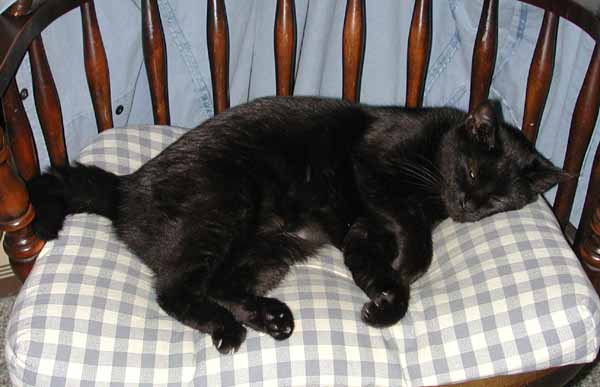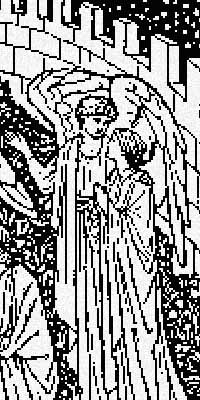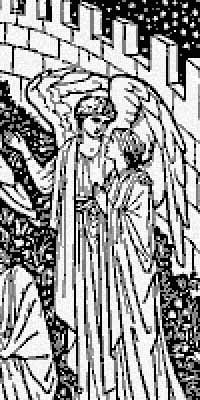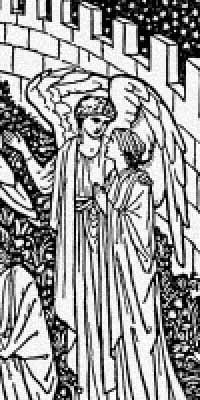I finally finished the pattern of Edward Hopper’s Gas yesterday.  I have been working on it for several days and not getting very far. It turned out to be much more difficult than I thought it would be to create a pattern from it. Usually, it’s the pictures of people that are the hardest — getting the skin tones right and arriving at a reasonable compromise between pattern size and detail.
I have been working on it for several days and not getting very far. It turned out to be much more difficult than I thought it would be to create a pattern from it. Usually, it’s the pictures of people that are the hardest — getting the skin tones right and arriving at a reasonable compromise between pattern size and detail.
I kept going back and forth between two images — one had an obvious diagonal pattern from halftones in the original print, and the other, while I liked the colors better, was very “pixellated”. But the main problem was adjusting the colors to a palette that could be matched in DMC floss, was attactive, seemed realistic, and had the right feel. When I started doing this, six years ago, I usually left colors pretty much alone. But I eventually realized that a lot of paintings are very dirty, or the varnish has yellowed or fogged, or even that the scan distorted the colors, so now I take a freer hand with color. I confess to a preference for bright, strong color and finally arrived at a version of the pattern that had clear, bright colors. Only then did I realize that it no longer looked like dusk — it looked like the middle of the day and the light from the little building made no sense.
The dim, dull colors (which aren’t as pretty) are the very thing that makes it look like dusk. I suppose this is because of the way our eyes work — the cones, which detect colors, are not very sensitive to light (so they need a lot of light to work). The rods are much more sensitive to light but they don’t detect color, so we can see in the dark but as it gets dark colors fade to monochrome. This is really quite an amazing picture on a technical level. The only really bright spots are the red gas pumps which are lit up by the light from the building. Although the sky is blue, the dim greens of the pines and the dull red of the roof (which would probably be bright red at noon) convince us that it’s twilight.





